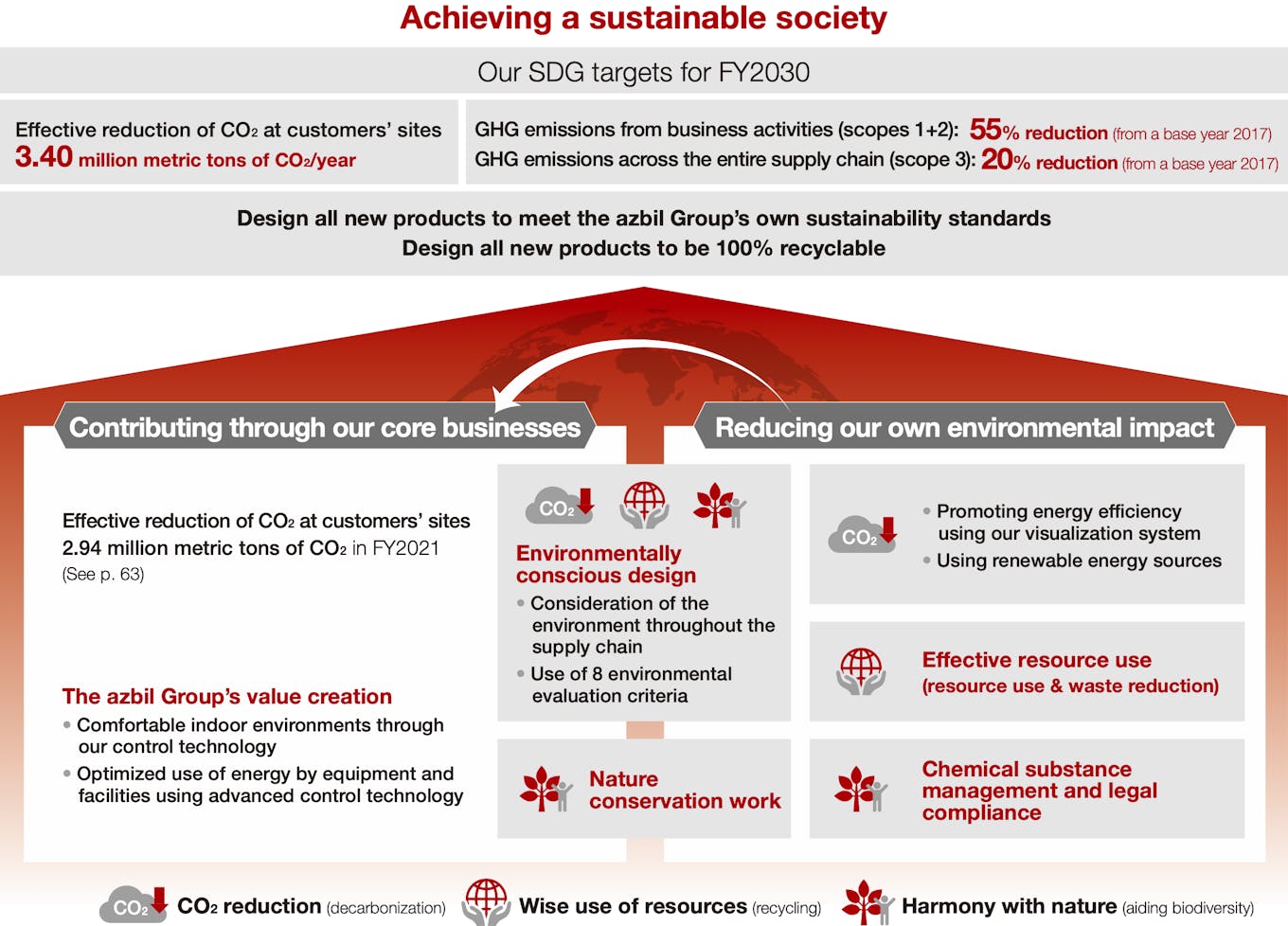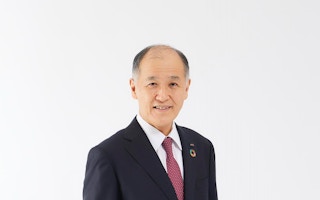The Japanese government notes in its long-term climate strategy that emissions reductions target validation bodies like the Science Based Targets initiative (SBTi) are becoming more influential, and that Japanese companies need to respond to such initiatives as it is a clearer pathway for them to reduce their greenhouse gas emissions.
For Azbil Corporation, a leading Tokyo-based supplier of automation technology used in industrial and commercial buildings, being on board the movement to achieve net zero by 2050 has brought about benefits. Less than three years since it set a target in 2019 for reducing 30 percent of its Scope 1 and 2 GHG emissions by 2030, it revised it up to 55 percent – nearly double the original target – and had it re-approved by SBTi in 2021, after achieving significant emissions cuts.
Setting science-based targets that are approved by the SBTi help ensure that sustainability initiatives proactively permeate through the organisation, said Takayuki Yokota, director and representative senior managing corporate executive of Azbil, who is responsible for the company’s overall corporate administrative functions, including its corporate governance initiatives. Setting targets can accelerate efforts to reduce Azbil’s impact on the environment, spur innovation, and most importantly, ensure accountability and that the set targets are progressively met, he said.
‘Visualising’ energy efficiency in buildings
There are more than 500 corporations in Japan approved by the SBTi, with that number increasing at an accelerating rate compared with the rest of the world.
Yokota tells Eco-Business that in meeting science-based targets of customers, Azbil has introduced measures to cut their emissions. For example, it strives to improve the energy efficiency of its customers’ buildings and factories through its automation solutions. The company has a building management system that allows its customers to view and optimize the energy consumption of a building’s air conditioning unit in real-time, for instance.
“Azbil has introduced systems that can visualise and analyse energy consumption in both our building automation business and advanced automation business,” Yokota said. In 2021, Azbil contributed to reducing 2.94 million metric tonnes of carbon dioxide as a result of its solutions. It targets to increase the effective reduction to 3.4 million metric tonnes of carbon dioxide annually by 2030.

Azbil strives to achieve carbon neutrality across Scope 1 and 2 emissions by 2050, and to reduce absolute Scope 3 or indirect greenhouse gas emissions 20 per cent by 2030. Photo: Azbil
The Japan-listed group, which has offices spread across the world, including in Asia Pacific, the US, Europe and the Middle East, has a long-term goal to achieve carbon neutrality across Scope 1 and 2 emissions by 2050. Azbil hopes to achieve this by promoting the use of renewable energy, including the introduction of solar power. It also committed to reducing absolute Scope 3 or indirect GHG emissions 20 per cent by 2030.
The SBTi is a partnership between several organisations that assesses and approves companies’ emissions reduction targets. Companies that set science-based targets, also called SBTi companies, reduce their emissions based on the latest climate science, and benefit from a strengthened brand reputation, more investor confidence, resilience against regulation, increased innovation and bottom-line savings, and a greater competitive edge.
Companies are already facing considerable regulatory, policy, investor and consumer pressure to lower their carbon emissions, and the pressure will only increase in the future, according to a December 2020 paper Beyond science-based targets: A blueprint for corporate action on climate and nature by the World Wildlife Foundation and Boston Consulting Group. “Companies that transform their business now are building competitive advantage compared with those that delay the transition, something that investors increasingly recognise and reward,” according to the study.
Setting science-based targets can also drive innovation, according to a 2018 survey of 185 company executives from SBTi-committed businesses conducted by market research company YouGov. The study found that 63 per cent of respondents note that setting science-based targets drives innovation within their company. More than 50 per cent of respondents expect at least half of their products and services to be low-carbon by 2030.
Almost a third (29 per cent) have seen bottom-line savings since setting science-based targets.
For example, Azbil worked with investment advisory firm Tokio Marine Asset Management to help Solid Square, a two-storey complex in Kawasaki, to reduce energy costs. The system led to a 23 per cent reduction in energy usage and helped the firm spend 17 million yen less in electric and gas charges during its fiscal year of December 2019 to November 2020.
“We are working to promote electricity and energy conservation within the Azbil Group using these systems,” Yokota said.
Aligning business practices
In addition to setting science-based targets, Yokota said companies can also set goals according to the United Nations Sustainable Development Goals (SDGs), which can guide companies along their sustainability journey. “To achieve a more sustainable society, we have positioned the SDGs as important guidance for our management,” Yokota said.
In meeting their set SDGs, Azbil has decided to design all new products to be 100 per cent recyclable by 2030. “Starting from product design all the way to final disposal, our products can be disassembled, separated, and recycled by our customers,” Yokota said. “Since carbon emissions from the use of products sold and from purchased products and services comprise over 90 per cent of the total, we are concentrating our efforts on environmentally-conscious design.”
Companies should also communicate their sustainability message to their stakeholders to promote awareness of the SDGs and report on their progress through sustainability reports. “We work closely with our corporate communications teams to promote our SDG initiatives and disseminate environmental, social and governance information,” said Yokota.
While companies may find the task of setting science-based targets and aligning their business practices with sustainable development goals daunting at first, it is crucial that they start now and take steps – however small at first – to adopt more sustainable practices in reducing their emissions.
A key value that Yokota hopes to imbue within the organisation as it navigates its sustainability journey is the Japanese idiom and concept of ichi-go ichi-e, which translates to “one opportunity, one encounter.”
“We only live on earth once. Living in the present reminds us to treasure the opportunities in contributing to a sustainable society so that our future generations can continue to enjoy the same resources that we have been using,” he said. “It teaches us the importance of valuing and preserving our natural resources and ecosystems, as they cannot be replaced once they are lost.”











